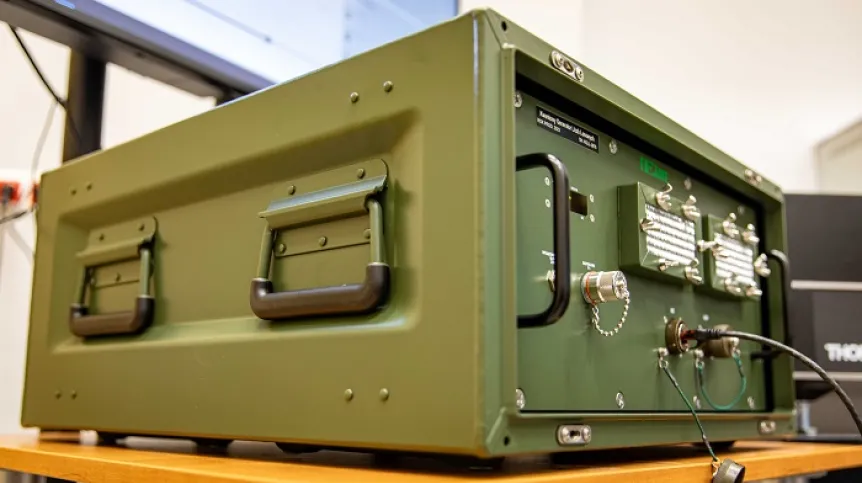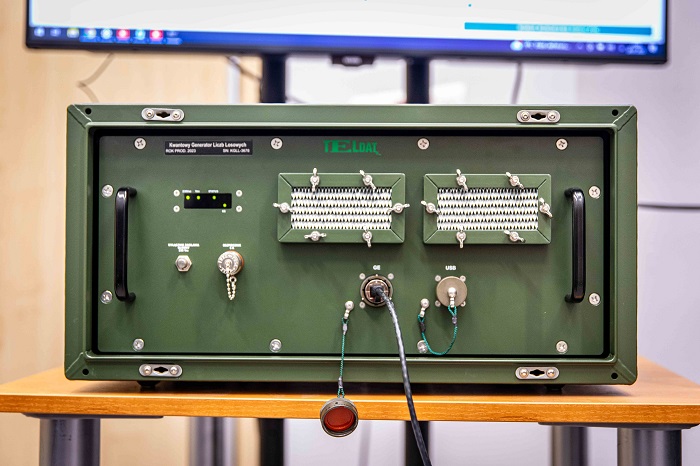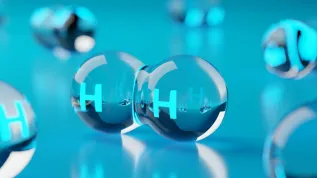
A quantum random number generator will enable encryption of satellite and fibre-optic communications. The device straight from the Polish factory is ready for testing at NASK, says Dr. Marek Życzkowski from the Military University of Technology.
This is the first ready-made component of the quantum key distribution system developed at the Military University of Technology.
A QUANTUM COMPUTER IS BEING DEVELOPED IN POLAND
'Polish quantum technology: a random number generator is one of the forms of protection against attacks on optical fibre networks that could be made with a quantum computer,’ says the project leader, Dr. Życzkowski.
He adds that such a computer does not yet exist, so optic fibres are safe. However, when the device is created, it will decode encryption keys in a matter of hours, performing calculations that would now take years. Scientists from the Military University of Technology are building and improving their own devices for the generation and distribution of a quantum key (QKD) based on single photons and entangled photons.

IS IT POSSIBLE TO WIN THE LOTTERY?
In addition to the military applications of the Polish generator, Dr. Życzkowski mentions its usefulness (after slight modifications) for lotteries, banks and telecom operators - for generating encryption codes. 'If the numbers are generated numerically, with a regular computer, they are repeatable. In the long run, but still. A quantum generator generates random numbers based on quantum physical phenomena, which is unpredictable with any device,’ he says.
A quantum generator makes it possible to build a secure link. The quantum code that encrypts public messages is responsible for security. Fully random numbers are generated thanks to the fact that a photon (the smallest particle of light) randomly chooses a path in the so-called fibre optic coupler.
The generator attenuates the laser pulse to very low energy, below the energy level of a single photon. The attenuated light quantum randomly chooses its path in the fibre optic coupler - it goes to either '0' or '1' output. The detectors detect single photons and based on their 'selection', bits 0 and 1 are generated, and from them - numbers. These numbers are then a way to encrypt data, among other things.
IT IS NOT EASY TO GENERATE A STRING OF RANDOM NUMBERS
A month ago, the random number generator was delivered to the Military University of Technology from the factory of the consortium member, TELDAT. It will be tested on real fibre optic networks by the NASK National Research Institute (also a member of the consortium).
Ultimately, as part of the project financed by Polish National Centre for Research and Development, two random number generators will be created to launch Quantum Key Distribution. Each will have its own software, electronics and FPGA processor. This is a fully Polish technology - a proprietary tool for the military for cryptological applications at the 8th (almost 9th) level of implementation. Dr. Życzkowski emphasizes that proprietary technologies are the safest for the country.
Other scientific institutions have also worked on the quantum generator, including the University of Gdańsk together with the Chilean Universidad de Concepción, where a random number generator was created for the state lottery in Chile. More on this subject - on the University of Gdańsk website.
QUANTUM COMPUTER - THREAT OR SECURITY
Three devices for data protection in computer networks are being developed in the project led by the Military University of Technology. 'The random number generator is a success on the way to properly launching the remaining devices that we are currently completing: the quantum key distribution system and the phase coding system,’ says Dr. Życzkowski. All this together will increase the level of satellite transmission security. It will also protect fibre optic sections against eavesdropping and hostile data interception.
The scientist had previously told the Science in Poland website about this larger whole. The set will be complemented by an 'entangled state generator' and a key exchange system for entangled photons. Such data exchange will enable protection against attacks on fibre optics when current coded encryption keys are no longer sufficient. More about the phenomenon of photon entanglement and the entangled state generator - on THIS page.
The latest device was created as part of the project 'Optical technologies of quantum cryptology for data protection in ICT networks'. It belongs to the group of so-called true random number generators (TRNGs), in which the successively generated bits are completely unpredictable. Find out more on the Military University of Technology website.
PAP - Science in Poland, Karolina Duszczyk
kol/ zan/ kap/
tr. RL













